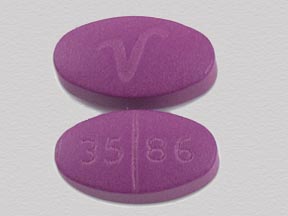Ibudone and Alcohol/Food Interactions
There are 2 alcohol/food/lifestyle interactions with Ibudone (hydrocodone / ibuprofen).
Hydrocodone Food/Lifestyle
Major Food Interaction
GENERALLY AVOID: Alcohol may potentiate the central nervous system (CNS) depressant effects of opioid analgesics including hydrocodone. Concomitant use may result in additive CNS depression and impairment of judgment, thinking, and psychomotor skills. In more severe cases, hypotension, respiratory depression, profound sedation, coma, or even death may occur.
GENERALLY AVOID: Consumption of alcohol while taking some sustained-release formulations of hydrocodone may cause rapid release of the drug, resulting in high systemic levels of hydrocodone that may be potentially lethal. Alcohol apparently can disrupt the release mechanism of some sustained-release formulations. In study subjects, the rate of absorption of hydrocodone from an extended-release formulation was found to be affected by coadministration with 40% alcohol in the fasted state, as demonstrated by an average 2.4-fold (up to 3.9-fold in one subject) increase in hydrocodone peak plasma concentration and a decrease in the time to peak concentration. Alcohol also increased the extent of absorption by an average of 1.2-fold (up to 1.7-fold in one subject).
GENERALLY AVOID: Grapefruit juice may increase the plasma concentrations of hydrocodone. The proposed mechanism is inhibition of CYP450 3A4-mediated metabolism of hydrocodone by certain compounds present in grapefruit. Increased hydrocodone concentrations could conceivably increase or prolong adverse drug effects and may cause potentially fatal respiratory depression.
MANAGEMENT: Patients taking sustained-release formulations of hydrocodone should not consume alcohol or use medications that contain alcohol. In general, potent narcotics such as hydrocodone should not be combined with alcohol. Patients should also avoid consumption of grapefruit or grapefruit juice during treatment with hydrocodone.
References (1)
- (2013) "Product Information. Zohydro ER (hydrocodone)." Zogenix, Inc
Switch to consumer interaction data
Ibuprofen High Blood Pressure (Hypertension)
Major Potential Hazard, Moderate plausibility
NSAIDs - fluid retention
Fluid retention and edema have been reported in association with the use of nonsteroidal anti-inflammatory drugs (NSAIDs), including some topical formulations. NSAIDs (including topicals) can lead to new onset of hypertension or worsening of preexisting hypertension, either of which can contribute to the increased incidence of cardiovascular events. NSAIDs should be used with caution in patients with preexisting fluid retention, hypertension, or history of heart failure. NSAIDs should be avoided in patients with severe heart failure unless the benefits are expected to outweigh the risk of worsening heart failure; if an NSAID is used in such patients, they should be monitored for signs of worsening heart failure. Blood pressure and cardiovascular status should be monitored closely during the initiation of NSAID treatment and throughout the course of therapy.
References (21)
- (2002) "Product Information. Motrin (ibuprofen)." Pharmacia and Upjohn
- (2002) "Product Information. Nalfon (fenoprofen)." Xspire Pharma
- (2002) "Product Information. Indocin (indomethacin)." Merck & Co., Inc
- (2002) "Product Information. Orudis (ketoprofen)." Wyeth-Ayerst Laboratories
- (2002) "Product Information. Naprosyn (naproxen)." Syntex Laboratories Inc
- (2006) "Product Information. Anaprox (naproxen)." Roche Laboratories
- (2001) "Product Information. Clinoril (sulindac)." Merck & Co., Inc
- (2001) "Product Information. Tolectin (tolmetin)." McNeil Pharmaceutical
- (2001) "Product Information. Voltaren (diclofenac)." Novartis Pharmaceuticals
- (2001) "Product Information. Relafen (nabumetone)." SmithKline Beecham
- (2001) "Product Information. Dolobid (diflunisal)." Merck & Co., Inc
- (2001) "Product Information. Ansaid (flurbiprofen)." Pharmacia and Upjohn
- (2001) "Product Information. Lodine (etodolac)." Wyeth-Ayerst Laboratories
- (2001) "Product Information. Daypro (oxaprozin)." Searle
- (2001) "Product Information. Celebrex (celecoxib)." Searle
- (2001) "Product Information. Mobic (meloxicam)." Boehringer-Ingelheim
- (2012) "Product Information. Meclofenamate Sodium (meclofenamate)." Mylan Pharmaceuticals Inc
- (2016) "Product Information. Flector Patch (diclofenac topical)." Actavis U.S. (Alpharma USPD)
- (2022) "Product Information. Feldene (piroxicam)." Pfizer U.S. Pharmaceuticals Group, SUPPL-52
- (2025) "Product Information. Symbravo (meloxicam-rizatriptan)." Axsome Therapeutics, Inc.
- (2024) "Product Information. Treximet (naproxen-sumatriptan)." Currax Pharmaceuticals LLC
Switch to consumer interaction data
Ibudone drug interactions
There are 885 drug interactions with Ibudone (hydrocodone / ibuprofen).
Ibudone disease interactions
There are 27 disease interactions with Ibudone (hydrocodone / ibuprofen) which include:
- impaired GI motility
- infectious diarrhea
- prematurity
- asthma
- fluid retention
- GI toxicity
- rash
- renal toxicities
- thrombosis
- acute alcohol intoxication
- drug dependence
- hypotension
- intracranial pressure
- respiratory depression
- gastrointestinal obstruction
- PKU
- adrenal insufficiency
- liver disease
- renal dysfunction
- seizure disorders
- urinary retention
- anemia
- hepatotoxicity
- hyperkalemia
- platelet aggregation inhibition
- arrhythmias
- biliary tract disease
More about Ibudone (hydrocodone / ibuprofen)
- Ibudone consumer information
- Check interactions
- Compare alternatives
- Reviews (1)
- Drug images
- Side effects
- Dosage information
- During pregnancy
- Drug class: narcotic analgesic combinations
Related treatment guides
Drug Interaction Classification
| Highly clinically significant. Avoid combinations; the risk of the interaction outweighs the benefit. | |
| Moderately clinically significant. Usually avoid combinations; use it only under special circumstances. | |
| Minimally clinically significant. Minimize risk; assess risk and consider an alternative drug, take steps to circumvent the interaction risk and/or institute a monitoring plan. | |
| No interaction information available. |
See also:
Further information
Always consult your healthcare provider to ensure the information displayed on this page applies to your personal circumstances.


